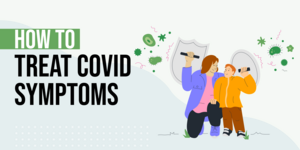Ingrown Hair Treatment
Ingrown hairs are what their name implies: hair that grows into the skin instead of out of it. They can be painful and can afflict anyone, and though they’re generally not serious, ingrown hairs can lead to infection if left untreated.
If you shave, wax, or use tweezers on any part of your body, you’ll likely experience ingrown hair at some point. Below, we’ll cover what ingrown hair is in more detail, as well as ingrown hair removal, treatment, and prevention.
The definition of ingrown hair
To understand how ingrown hair forms, we must start with how hairs grow.
Hairs spring out of openings in the skin called hair follicles. These are vertical shafts located in the dermis or the mid-layer of skin below the epidermis, and they consist of a hair bulb, an oil gland, and blood vessels. This follicle system creates hair from the bottom up, pushing the hair upwards through a small opening in the skin.
Now picture running a razor over your skin, clipping the hair off slightly below the skin’s surface. Alternately, picture plucking the entire hair out of the shaft via waxing or tweezing. When the hair grows back, there’s a good chance it will grow normally out of the shaft — but there’s also a chance it will curl back and penetrate the skin before it makes it out.
This is how ingrown hair forms. If your hair is especially thick or curly, ingrown hairs are more likely, notes the NHS.
Symptoms of an ingrown hair
If you have the following symptoms, particularly after shaving, waxing, or plucking, there’s a good chance you have ingrown hair, according to the NHS:
- Irritated skin
- Small, acne-like bumps that have visible hairs in the middle
- Acne-like bumps on the neck and face that are filled with pus
- Painful, tender, or itchy skin
Occasionally, you may notice the presence of “razor bumps.” This is a condition called pseudofolliculitis barbae and entails hair that has re-entered the skin and caused raised bumps. The most common place for this is the face and neck, but it can happen anywhere you shave, reports the NHS.
Ingrown hairs are diagnosed by a dermatologist during a physical exam. After noting the presence of ingrown hairs, your doctor may treat them and help you learn ways to prevent them in the future.
Common ingrown hair sites
The most common areas for ingrown hairs are areas where you shave. According to the NHS, this can include:
- Your face and neck
- Chest and back
- Legs
- Scalp
- Armpits
- Groin
Ingrown hairs might vary slightly in appearance depending on the area they grow in. However, the underlying cause is the same according to the NHS.
Causes of ingrown hair
Ingrown hairs are not unique to anyone—it’s common for many people to get them. However, it’s more likely among people with coarse and/or curly hair, notes the NHS.
The NHS reports, because curly hair can begin to twist while it’s still beneath the skin surface, there’s a good chance it could divert and enter the skin. Especially coarse hair can do the same since the hair has more structural strength and penetrating power. Both hair types are more likely to become ingrown after shaving, tweezing, or waxing.
Potential complications from ingrown hairs
In many cases, ingrown hairs will go away naturally as the hair escapes the surface of the skin. On occasion, though, the ingrown hair can lead to an infection. This could result in pimple-like bumps on the skin with whiteheads in their center, which means pus is filling the inside of the ingrown hair chamber, according to the NHS.
Downstream effects of infected ingrown hairs could include discoloration and scarring. Additionally, the field of dermatology is exploring whether an ingrown hair infection can lead to pilonidal cysts. These are pockets of hair, oil, and dead skin cells that form between your buttocks at the base of your tailbone. These ingrown hair cysts can be painful and may even require surgery if they are too swollen or tender, notes the NHS.
Treatment for ingrown hair
If your ingrown hair isn’t going away on its own or has grown painful, tender, or infected, consult your doctor. One of the easiest ingrown hair treatment options is simply making a small incision at the tip of the ingrown hair bump, which provides an opening for the hair to escape, according to the Cedars Sinai. If the bump is infected, they may also drain the pus from the wound.
Occasionally, Cedars Sinai notes that they may also prescribe medications like:
- Antibiotics: These may either be oral pills or topical solutions that you rub onto your skin. They will kill bacteria and reduce the amount of infection in your skin.
- Steroids: Certain steroids can reduce irritation and swelling in ingrown hairs.
- Retinoids: Usually given as a drug called Retin-A, retinoids can help prevent changes to skin pigmentation and remove dead skin cells.
Ingrown hair prevention
The best way to avoid ingrown hairs is to learn how to prevent them at the source. When you go to shave, try the following tips as suggested by Cedars Sinai:
- Take a wet washcloth and rub your face in a circular motion. This will help pull ingrown hairs out of the surface of your skin.
- Use a single-blade razor when you shave. Multi-blade razors may offer a “closer” shave, but they can cut down your hair so short that they become ingrown.
- Use warm water to wet your skin before you start shaving. This helps open your pores.
- Use a lubricating shave gel.
- Shave with the grain—in other words, shave in the direction your hair lays and not against it.
- A close shave is better than a smooth shave. Leave some stubble if possible.
- Hold electric razors above the surface of your skin to avoid cutting the hair flush with your skin.
- Soothe your skin after shaving with a cold washcloth.
- Other types of hair removal lead to fewer ingrown hairs. Hair removal creams and laser hair removal are options to consider.
Summary
If you shave, wax, or pluck regularly, try practicing techniques that don’t cut the hair down to the skin level. If you suspect you have an infected ingrown hair, see a dermatologist for treatment and recommendations.
The quickest way to see a healthcare professional is to search for urgent care centers near you on Solv.
Find Ingrown Hair Treatment near you
- Alabama
- Alaska
- Arizona
- Arkansas
- California
- Colorado
- Connecticut
- Delaware
- Florida
- Georgia
- Hawaii
- Idaho
- Illinois
- Indiana
- Iowa
- Kansas
- Kentucky
- Louisiana
- Maine
- Maryland
- Massachusetts
- Michigan
- Minnesota
- Mississippi
- Missouri
- Montana
- Nebraska
- Nevada
- New Hampshire
- New Jersey
- New Mexico
- New York
- North Carolina
- North Dakota
- Ohio
- Oklahoma
- Oregon
- Pennsylvania
- Rhode Island
- South Carolina
- South Dakota
- Tennessee
- Texas
- Utah
- Vermont
- Virginia
- Washington
- Washington DC
- West Virginia
- Wisconsin
- Wyoming
Ingrown Hair Treatment FAQs
How do I get rid of ingrown hair?
Most ingrown hairs will go away on their own reports the NHS. If they don’t, see a doctor to receive treatment for your ingrown hairs.
Where are ingrown hairs found on the body? (head/beard/armpit/pubic)
According to the NHS, ingrown hairs happen anywhere you shave, tweeze, or wax: the head, beard, armpits, legs, and pubic area are common sites.
What causes ingrown hairs?
The NHS notes that ingrown hairs are caused by hairs that have been removed too deep, usually below the surface of the skin, and grow back laterally into the skin itself instead of out of the shaft.
What to do with ingrown hair
If you have an ingrown hair, keep washing the affected area with a mild facial cleanser. Usually, the problem will take care of itself. If it doesn’t, see your dermatologist.
What are home remedies for ingrown hair?
The best home remedy is gently rubbing the affected area in a circular motion with a wet washcloth, which can pull ingrown hairs out of your skin, according to the NHS.
How can I prevent ingrown hairs?
Prevent ingrown hairs at home by shaving with a single-blade razor, avoiding a too-close shave or trim, and practicing other tips outlined above in the Ingrown Hair Prevention section, according to the NHS. These include using a lubricating shave gel and trying a new hair removal method.
Where can I get ingrown hairs treated?
The best place to treat ingrown hairs is at a dermatology office.
Solv has strict sourcing guidelines and relies on peer-reviewed studies, academic research institutions, and medical associations. We avoid using tertiary references.
Everyday Healthcare, Simplified
Expert advice to help you live your best life








